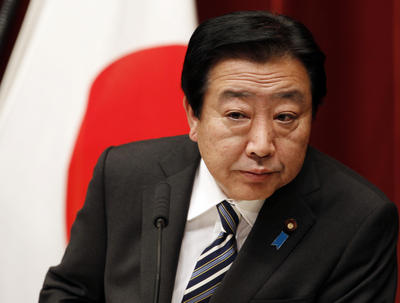Administrative reform will see ‘wasteful’ government spending being cut, for example, by getting rid of several government-affiliated agencies and abolishing or integrating numerous budget special accounts or merging them with the general account.
Prior to the 2011 Democratic Party of Japan (DPJ) presidential race, Noda’s mentor, former Prime Minister Morihiro Hosokawa, advised him that if he were planning to raise taxes, he had to make sure he paired this process with administrative reform in order to make it more politically palatable. Hosokawa pointed out to Noda that his own plan for a national welfare tax failed because he did not try to implement it at the same time as tackling administrative reforms.
During the Hosokawa administration (1993-94), Ichiro Ozawa — who is now the loudest critic within the DPJ of Noda’s plan — pressured Hosokawa into accepting the need for an increase in the consumption tax. Hosokawa subsequently announced a plan for a ‘national welfare tax’ (kokumin fukushizei), which would raise the consumption tax from 3 per cent to 7 per cent. When this reform was opposed by Masayoshi Takemura, Chief Cabinet Secretary and leader of the New Party Harbinger at the time, Ozawa suggested to Hosokawa that he eject Takemura from the cabinet, which he refused. This internal party dispute ended with Hosokawa’s plans for tax reform abandoned and his own credibility weakened.
Shusei Tanaka — a New Party Harbinger politician-turned-university professor, member of Japan’s policy commentariat and regular critic of all things DPJ — argues that because Japan’s bureaucrats will lead the currently proposed administrative reforms, the process will simply bloat the bureaucracy even more. He also believes that Australia provides the correct and preferable example of private sector-led administrative reform. He is wrong on both counts.
First, if the proposed legislation is passed, administrative reform under Noda will be led by ministers, particularly Deputy Prime Minister Katsuya Okada, and implemented by a new dedicated body located within the Cabinet Office with powers to implement legislated reforms. The Administrative Evaluation Bureau of the Ministry of Internal Affairs and Communications, which evaluates public policy and government services, will be amalgamated with the new administrative reform bureau. As part of the Cabinet Office, the new bureau will be part of the executive governance structure.
Under Noda’s predecessors (Prime Ministers Yukio Hatoyama and Naoto Kan), the process of administrative reform was a case of sound and fury signifying little. In the front line were ministers and the Government Revitalisation Unit (GRU), which held open budget screenings that attracted a great deal of media and public attention. Although the GRU was very popular among the public, its powers were limited to making recommendations, not to making actual budget cuts. It may have created new political stars such as Yukio Edano and Renho, given a tremendous boost to the Hatoyama administration in the polls, and improved bureaucratic scrutiny and accountability, but when it came to the bottom line, it had bark but no bite. It was a big political plus, but not much of a fiscal one.
The newly proposed administrative reform body might actually have some teeth. The government is presently deciding whether the new entity will take over the high-profile budget-screening sessions from the GRU and whether or not bureaucrats will have to abide by its rulings on expenditure. Without the latter, it will be a toothless tiger. Moreover, as political scientists who follow the precepts of institutionalism would posit, if you want to change the outcomes, you have to change the process. Coordinated executive power is the key to implementing administrative reform in Japan, just as it is to trade-policy reform. So, the notion that these reforms will be led by bureaucrats and will bloat the bureaucracy should be dismissed.
Second, Australia’s administrative reform process in the 1980s and 1990s was not led by the private sector — it was steered by ministers in close partnership with key sections of the bureaucracy. While the private sector encouraged the process, it had no direct influence — and the private sector in Japan is similarly supportive of administrative reform. The neo-liberal ideological views of Australian business, which permeated government through its economic advisors, provided fertile soil for the reforms. But the actual changes were led by the government in conjunction with relevant central agencies, particularly the Department of Finance. This same pattern of reform has been witnessed in several other Westminster system countries.
All this indicates that carrying out executive-led administrative reform may provide Noda with the support he needs to implement his tax-reform agenda and complements his efforts to streamline the bureaucracy by cutting pay and numbers of new recruits into the civil service.
Aurelia George Mulgan is Professor at the University of New South Wales, Australian Defence Force Academy, Canberra.

